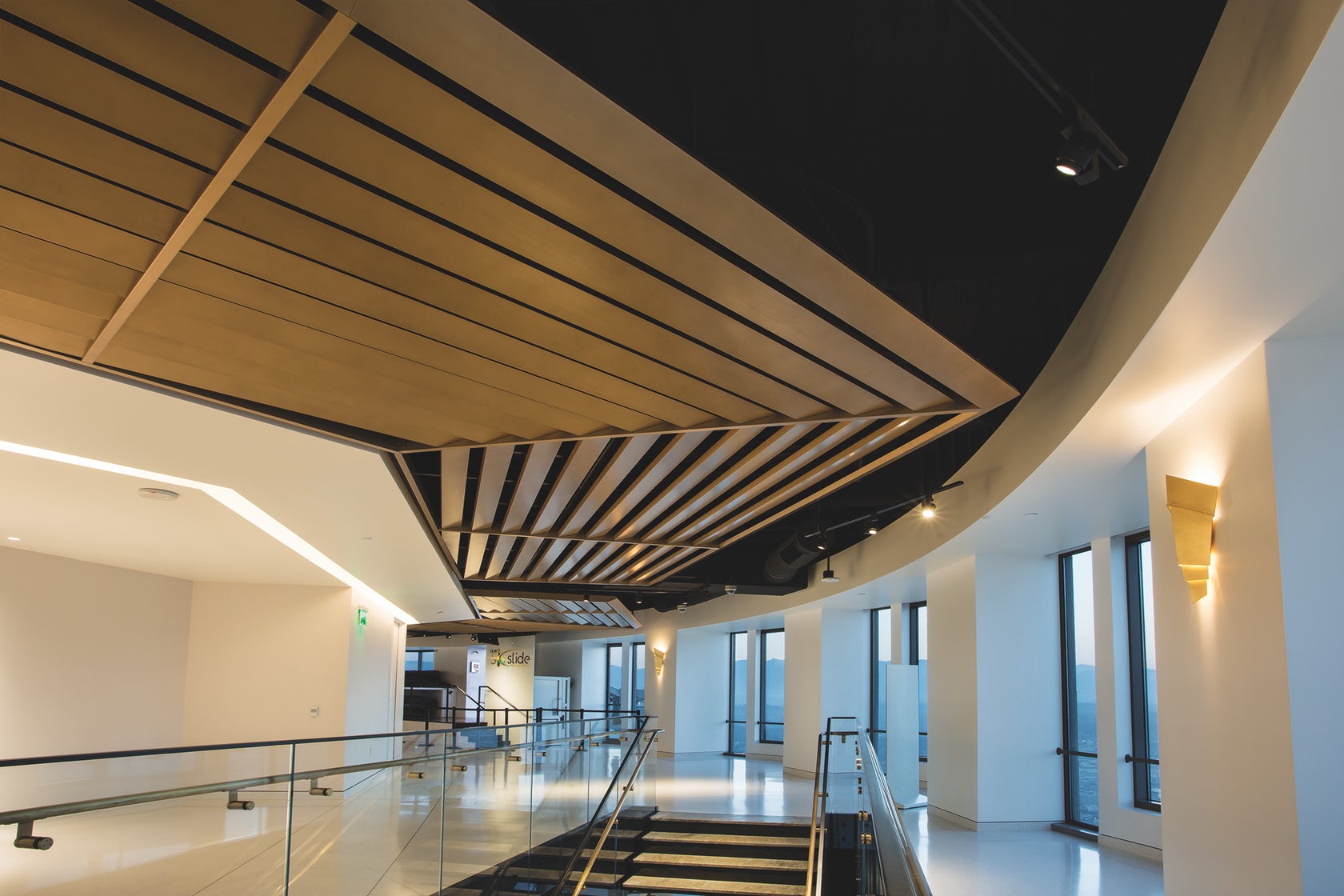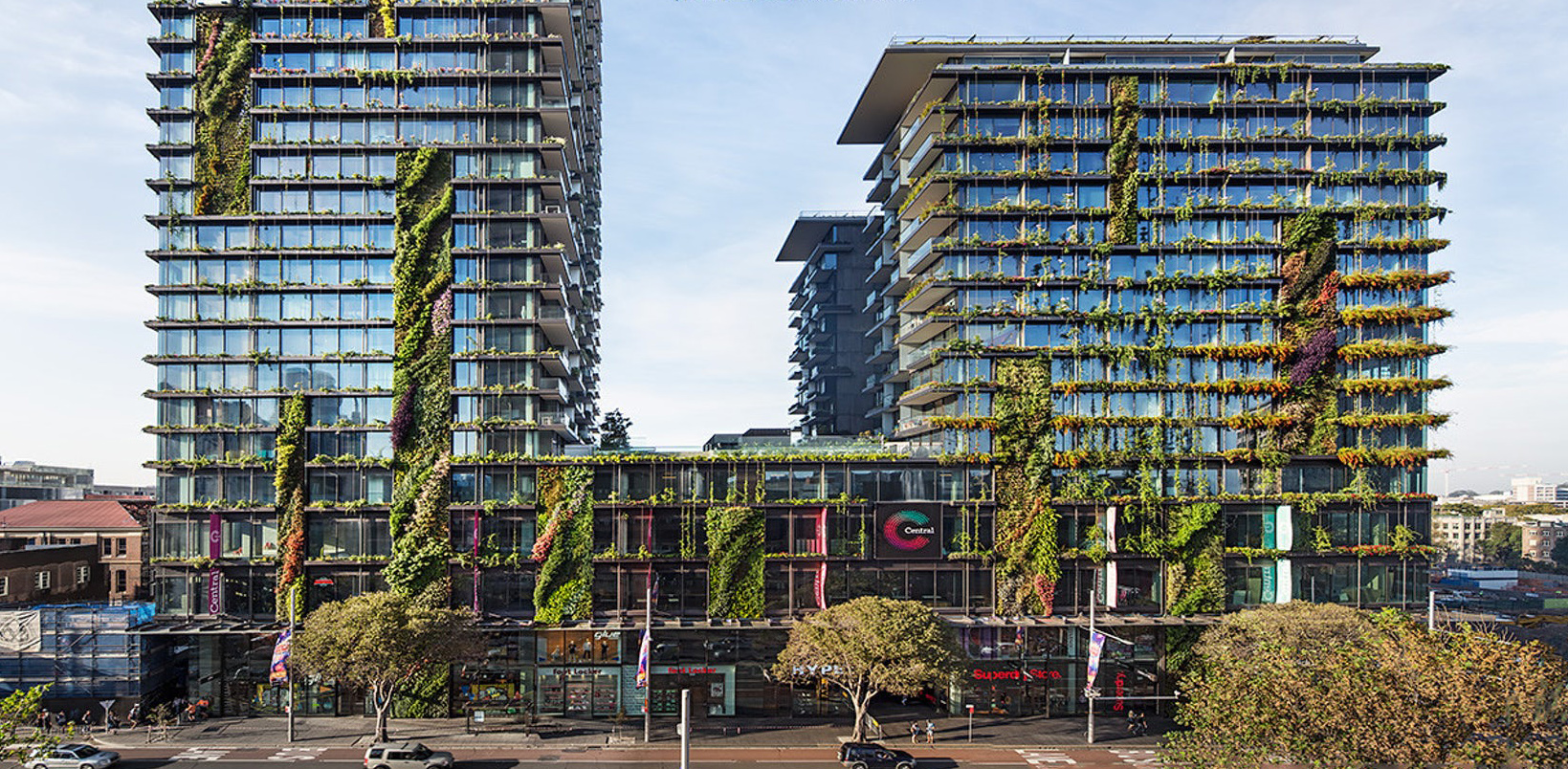Acoustical treatments are an integral part of an interior space. Wall-to-wall ceilings an provide acoustical coverage and aesthetically enhance a room, but if the design intent is for an open structure space, other options are available to maintain an open plenum visual.
One of the nation’s leading providers of commercial and residential interiors specializing in exposed ceiling solutions is Armstrong Ceiling & Wall solutions, a Pennsylvania-based company offering a wealth of panel material options from mineral fiber to fiberglass, metal to wood and cementous wood fiber, and more. Their innovative line of products are offered in unique sizes and shapes, perforated for acoustical performance, and finished in your choice of colors to compliment any architectural interior.

Armstrong SoundScapes Blades
How do non-traditional shapes and forms affect noise levels? With each new product designed, material tested, and installation method developed with research and time reduction in mind, Armstrong Ceiling & Wall Solutions is constantly exploring how different options impact noise levels in a space. It’s a question that architects and building owners and facility managers consider as well — especially if they want quality noise control combined with an exposed ceiling. That’s why each system within Armstrong’s extensive product line is flexible and customizable, empowering architects with the freedom to design.
“Architects want to have flexibility to preserve their open structure design aesthetic while providing the acoustics their clients need,” said Nicholas Taraborelli, Vice President of Commercial Marketing. “The Ability to choose from Spotlight™ acoustics treatment that compliments their design, or an InvisAcoustics™ product that virtually disappears and gives our customers ways to create quieter spaces and maintain their design intent.”

Tectum Shapes and Clouds
Armstrong Ceiling & Wall Solutions offers an abundance of discontinuous acoustical and aesthetic options. Architects can specify new products and create new concepts for their projects. The convenience of collaborating with the Armstrong You Inspire™ Solutions Center to create one-of-a-kind design and installation treatments, tailored to specific projects allows for complete design support.



Soundscape Blades installation methods
As well as design flexibility and technical expertise, Armstrong Ceilings offers installation methods that are easy to detail and install. Their details can then be combined with countless materials, colors and forms suited to the unique context of each ceiling design. Their MetalWorks™ family, for example, is available in blades, canopies, clouds, welded wire and wings, among others, that have NRC ratings of up to 0.80.
Meanwhile, Armstrong’s SoundSoak® and Soundscapes® Shapes and Baffles systems come in hanging baffles and Blades™ Vertical Elements that expose the ceiling while offering a lively array of colors. The blades in particular reverberate sound at 1.4 seconds per 141 feet while the baffles, which include a fiberglass core, reduce reverberation time by about 50 percent per 40 square feet. Armstrong’s Tectum® products are also popular as suspended blades and clouds while their Direct-to-Deck acoustic options, like InvisAcoustics™ panels attach quickly and easily and reduce reverberation time to quiet spaces.

SoundScapes® Blades
Vertical panels, which absorb sound from both sides, reduce reverberation times with only 20 to 50 percent coverage. The number of panels specified can provide the level of sound control desired I open environments where speech privacy is not a key requirement.

SoundScapes® Shapes
When considering acoustic ceiling solutions, clients might gravitate towards full-coverage options if speech privacy and confidentiality are required. In areas where these are not concerns, and lower reverberation times are a desired goal, many possibilities exist in shapes, sizes, colors, and forms. Architects can educate their clients on the many striking options available to them, and ultimately specify a ceiling system that elevates the overall design language of a space.
This also gives architects the opportunity to maintain design integrity and fulfill their desire for an exposed ceiling while integrating acoustic panels that either strongly accentuate or subtly strengthen the room. These ceiling solutions are not seen as not a cover-up, but as a creative addition that contributes to the long-term impact of an interior on its inhabitants.
Top Image: MetalWorks™ Custom Baffle




